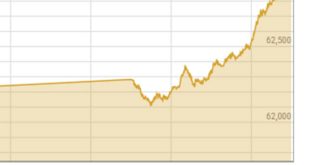The rupee continued to weaken against the dollar on Monday, falling by Rs1.72 during early trade in the interbank market.
By 12pm, the local currency was changing hands at Rs229.9 per dollar, data shared by the Forex Association of Pakistan (FAP) showed. This equates to a depreciation of 0.75 per cent.
Separately, the PKR was being traded at Rs234 per dollar in the open market at the same time.
Exchange Companies Association of Pakistan (Ecap) General Secretary Zafar Paracha said there were several factors behind the rupee’s decline, including an expected increase in the import bill in the aftermath of the devastating floods.
However, one of the primary reasons was that friendly countries, which had promised to provide financing once the International Monetary Fund’s (IMF) deposit was received, had not yet fulfilled their commitments, he said.
“They appear reluctant to do so because of the political situation, corruption and our past record of not returning money,” Paracha commented. “Our expectation that the rupee would gain Rs10-20 after IMF deposit was received did not happen. We received $1.16bn from the IMF which is not adequate.”
The country needed to make payments amounting to $40 billion in the current fiscal year, the Ecap general secretary noted. He added that while the government previously said it had made arrangements to meet all financing needs, now it appeared its statements have changed.
“Finance Minister Miftah Ismail appeared stressed during his presser on Saturday. He said the pressure on the rupee will remain.
“It appears we [only] delayed default and are moving towards it again. The government is not addressing issues, especially smuggling of currency and goods,” he said.
Head of Research at Tresmark Komal Mansoor said while imports had been temporarily put on hold, it had shifted the problem to smuggling from Afghanistan against dollar payments in cash. This has increased the appetite for dollars in the open market, she said.
“The difference between the interbank and open markets is creating an incentive for foreign currency (FCY) accounts to withdraw USD and sell into the open market. Ultra-low interest on foreign currency accounts is not helping in attracting fresh FCY deposits.”
Mettis Global Director Saad bin Naseer said the rupee was under pressure and consequently, banks had stopped opening letters of credit for unnecessary imports.
He pointed out that there was a shock to the supply side and cotton crops had been washed away because of the floods due to which the burden on the current account would be “very high”.
He suggested that the government should manage exporters’ payments by ensuring that the dollars are converted into rupees the same day that the export consignment is sent. He added that the government could bring back $5-6bn that was revolving abroad “very soon” if such a policy was introduced.
The rupee has been losing ground against the dollar since Sept 2. It fell by Rs9.2 during the last week to close at Rs228.18.
According to financial data and analytics portal Mettis Global, the rupee’s value has declined 26.37pc over the last 52 weeks. It fell to a record low of 239.94 on July 28.
 Pakish News We are an interactive media group that here a purpose to update users with the latest information. Our mission is to give you knowledge not only about your surroundings. We will also update you around the Globe.
Pakish News We are an interactive media group that here a purpose to update users with the latest information. Our mission is to give you knowledge not only about your surroundings. We will also update you around the Globe.



